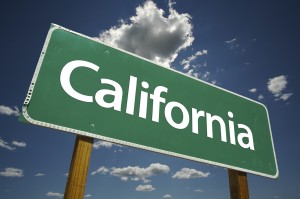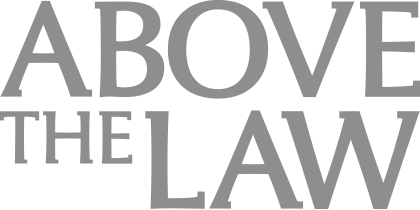California Posts Worst Bar Exam Results The State Has Seen In Almost 70 Years
The overall pass rate was just 27.3 percent, a record low.
 The results are in from the February 2018 administration of the California bar exam, and to say they aren’t pretty would be an understatement because the overall pass rate reached a new record low.
The results are in from the February 2018 administration of the California bar exam, and to say they aren’t pretty would be an understatement because the overall pass rate reached a new record low.
According to a press release from the State Bar of California, the overall pass rate for the February 2018 exam was 27.3 percent, while the pass rate for first-time takers was 39 percent. The pass rate for retakers was a shockingly low 23 percent. This is the first time since 1986 that the overall pass rate has fallen below 30 percent, and the lowest pass rate recorded in California since 1951, the earliest date listed on the state’s summary of results. For the sake of comparison, let’s take a look at the results for the past few administrations of the California bar exam.
In February 2015, the overall pass rate was 39.5 percent, and the pass rate for first-time takers was 47.4 percent. In July 2015, the overall pass rate was 46.6 percent, and the pass rate for first-time takers was 60 percent. In February 2016, the overall pass rate was 35.7 percent, and the pass rate for first-time takers was 45 percent. In July 2016, the overall pass rate was 43 percent, and the pass rate for first-time takers was 56 percent. In February 2017, the overall pass rate was 34.5 percent, and the pass rate for first-time takers was 39 percent. In July 2017, the overall pass rate for the state’s first foray with a two-day exam was 49.6 percent, and the pass rate for first-time takers was 62 percent.

Generative AI at Work: Boosting e-Discovery Efficiency for Corporate Legal Teams
Not only did the two-day exam format do nothing for this winter’s exam candidates, but the State Bar again used the total number of those who completed the exam in their final calculation for the February 2018 passage rate rather than the total number of people who actually sat for the exam. We shudder to think of what the true overall pass rate might be for this administration of the exam.
Leah T. Wilson, Executive Director of the State Bar of California, is quite concerned about the low overall pass rate — so concerned, in fact, that the Bar has started a new program to figure out why people are failing in record numbers:
“In order to help improve performance on the bar exam, we recently launched the Productive Mindset Intervention Program. Through this program and ongoing study, we hope to better understand the downward trend of bar exam pass rates.” …
The Productive Mindset Intervention Program will be available to applicants beginning with the July 2018 Bar Exam. This program is a partnership with researchers at Stanford University, the University of Southern California, and Indiana University. The program is designed to improve exam performance across the board, with a particular boost for people of color and women. More than 1,700 applicants who are registered for the July 2018 California Bar Exam have registered for the program.
The State Bar will also be conducting a California Attorney Job Analysis Study in an effort to get information about “the knowledge and skills that entry-level attorneys need,” and the information gleaned from this study will be used to evaluate the future content and cut scores on the exam. “Over the long term, we need to be sure that we are testing for the skills and content that new attorneys need, and that we are doing so in the right format,” Wilson said.
Sponsored


AI Presents Both Opportunities And Risks For Lawyers. Are You Prepared?

Curbing Client And Talent Loss With Productivity Tech

Curbing Client And Talent Loss With Productivity Tech
On the bright side, the state’s mean scaled MBE score was 1355, compared with the national average of 1341. On the other hand, this is the lowest overall pass rate California has seen for the February administration of the exam — or any administration of the exam — in almost 70 years. This is absurd.
Here are some additional statistics from this winter’s exam:
| School Type | First-Timers | Repeaters |
| California ABA | 46% | 31% |
| Out-of-State ABA | 35% | 27% |
| California Accredited (but not ABA) | 23% | 9% |
| Unaccredited: Fixed-Facility | 33% | 5% |
| Unaccredited: Correspondence | 14% | 13% |
| Unaccredited Distance Learning | 24% | 5% |
| All Others | 43% | 19% |
| All Applicants | 39% | 23% |
Something here needs to change, and it’s not just law school admissions standards anymore. If the California Supreme Court had decided to lower the state bar’s cut score to bring it in line with that of the vast majority of other states (or hell, even if the state’s high court had decided to lower the cut score by just a point or two), imagine how many more people would have passed. It pains us to say that at this point, lowering the cut score on the California bar exam may be the state’s only remedy for the thousands of would-be lawyers who continue to fail the test year after year.
Congratulations if you managed to pass the bar exam in California this winter. If you didn’t pass, don’t despair. Many very successful people have failed the bar exam (see our list of famous bar exam failures). Focus on July and try to develop a plan for passing, and someday, you’ll conquer the beast that is the California bar exam.
Sponsored

Generative AI at Work: Boosting e-Discovery Efficiency for Corporate Legal Teams

Law Firm Business Development Is More Than Relationship Building
State Bar of California Releases Results of the February 2018 Bar Exam [State Bar of California]
 Staci Zaretsky has been an editor at Above the Law since 2011. She’d love to hear from you, so please feel free to email her with any tips, questions, comments, or critiques. You can follow her on Twitter or connect with her on LinkedIn.
Staci Zaretsky has been an editor at Above the Law since 2011. She’d love to hear from you, so please feel free to email her with any tips, questions, comments, or critiques. You can follow her on Twitter or connect with her on LinkedIn.







